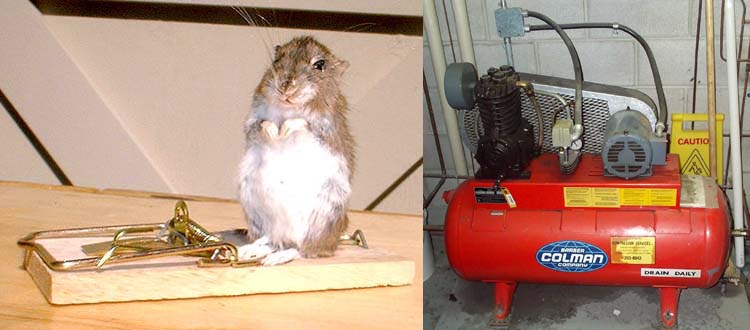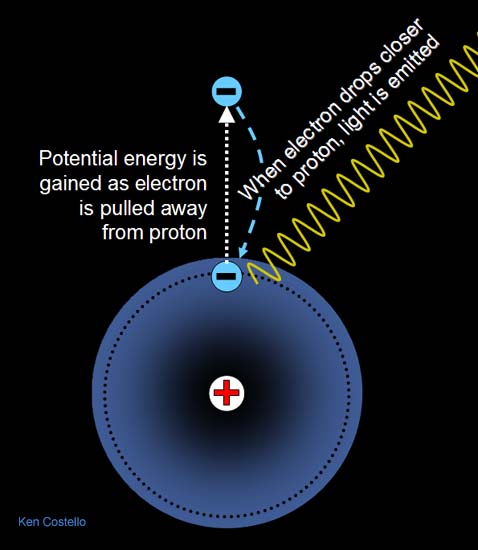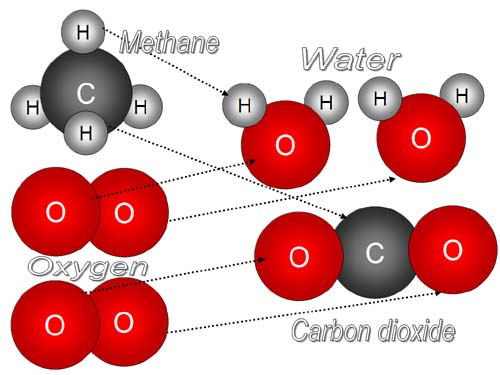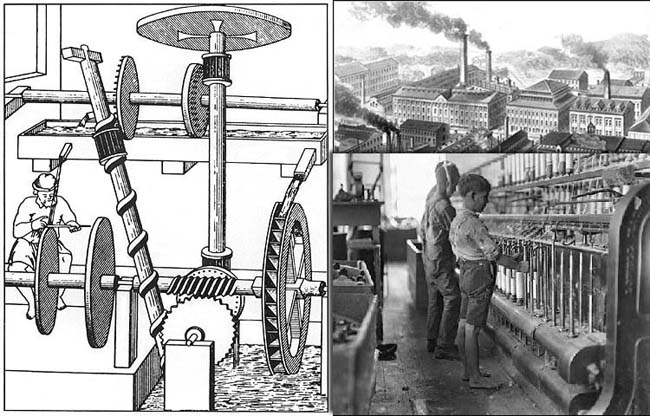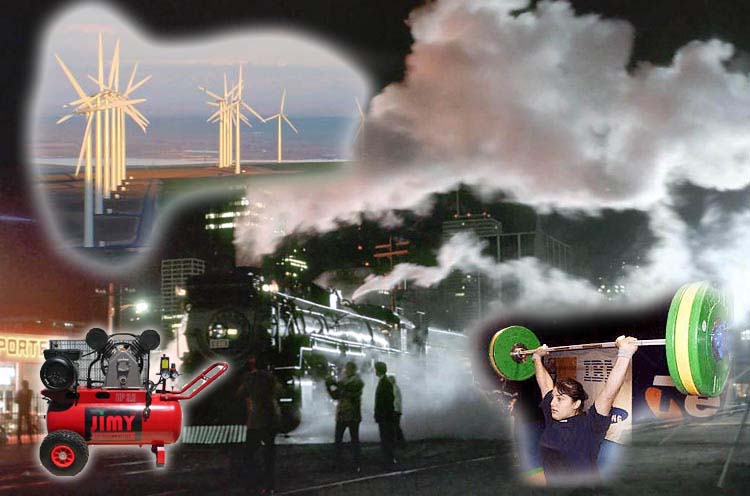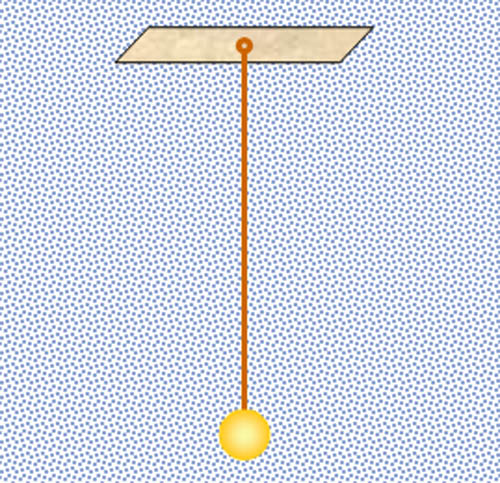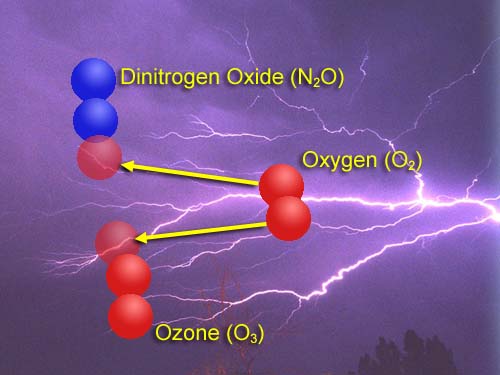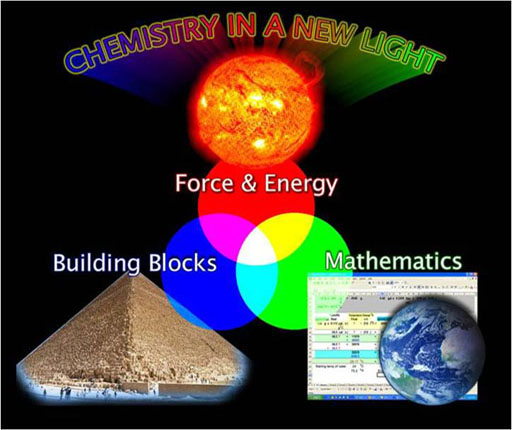 |
As mentioned before, chemistry can be studied by concentrating on the 3 areas of focus. This chapter on thermochemistry mostly focuses on the Force & Energy aspect of chemistry. There's also quite a bit of Mathematics focus as well. |
|
What is Energy? |
 |
One way to define energy is by observation.
If you see something that doesn't happen on its own, then there must be
some energy being expended. For example, cars don't go up hill on their
own, so there must be some energy getting used. Coming downhill, however,
we could see that happening without any energy being used. |
 |
Like the car going up hill, anything that gets
lifted against gravity requires some energy.
Fortunately, this energy has the potential to be used again. For example,
the energy to raise the skiers up the mountain will be used to propel the
skiers down the slopes. |
|
We can think of just two
types of energy, one doing work, and
the other waiting to do work. |
 Freedom Train at Houston Union Station, February
1976 - photo © Gary Morris (Used with Permission)
Freedom Train at Houston Union Station, February
1976 - photo © Gary Morris (Used with Permission) |
| When it's doing work, we see it pushing
or pulling, glowing, or changing the temperature. This train is using
energy in three ways because it's pulling cars,
heating up the surrounding air, and giving
off light. |
Energy that is waiting to do work (has to the
potential for work) is called potential energy
and is recognized in 3 ways:
1) It sits above ground level |
|
|
| On the left is a pile
driver. A weight (the driver) is lifted
up to the top of the rig. The weight now has potential
energy. As it falls the potential energy becomes kinetic
energy (moving energy). When it strikes the post (pile/piling)
at the bottom, the energy is used to drive the post farther into the ground.
It's a smart way to deliver a lot of force. Wrestlers use the pile
driver maneuver by lifting the opponent and letting gravity
do the work as the opponent falls to the mat head first. |
On the right is Hoover dam. Lake
Mead is held back by the dam. Lake Mead sits higher
than the ground below the dam. This means the water in the lake has
a lot of potential energy. This energy is tapped
when water is allowed to flow downhill (kinetic energy) and spin turbines. |
|
Energy is potential energy if: 2) Something
is compressed in someway |
|
|
| A set mousetrap has a spring that has been
compressed (or stretched), and it's sitting
there ready to convert this potential energy to kinetic
energy as the wire trap flips over to the other side. |
A tank of compressed
air also possesses potential energy. If an air tool is attached that
potential energy is used to push
a piston that makes the air tool mechanism spin or vibrate. |
|
Chemical energy
is a type of potential energy. It's similar
to raising objects against gravity (like the pile driver) except instead
of moving objects against the attraction of gravity, it is moving objects
against the attraction of plus and minus charges. To illustrate this,
let's look at the simplest of elements, hydrogen.... |
|
|
The hydrogen atom consists of
one proton (+)
and one electron (-). The proton sits
in the center (nucleus) of the atom.
The proton is 2,000 times heavier than the electron. The electron is lightweight
and very mobile. The diagram shows the electron as a sphere orbiting the
nucleus. This is a simplistic view of an electron. Electrons are more cloud-like
than ball-like. If an electron is moved farther away
from the proton it takes
energy because they are attracted to each other (like gravity). The
farther away the electron has been moved away from the proton, the more
energy it takes, and the more potential energy stored
in the electron. When the electron drops back
closer to the proton, it will convert that
potential energy to light energy. The light
energy can be in the form of infrared, visible, ultraviolet, or even X-ray
light. |
| Chemical energy
is stored in fuels like methane (natural gas) and gasoline. Let's see how
methane combining with oxygen (combustion) gives up this type of potential
energy. |
|
|
When methane collides with oxygen
at high speeds (caused by flame or spark), there's a rearrangement of the
atoms. Two of the oxygen atoms will combine with the four hydrogen (H) atoms
to form two water molecules (H2O). The other two oxygen
atoms will combine with methane's carbon atom to form carbon dioxide. Why
does this give off energy? |
|
Below is the same diagram as above, except all
of the protons and electrons
that hydrogen, carbon, and oxygen have are shown. Hydrogen has one proton
and one electron. Carbon has six protons and six electrons. Oxygen has
8 protons and 8 electrons. Remember the electrons are all being pulled
on by the protons (kind of like Earth pulling on objects on the Earth). |
|
|
| The reason energy is released during rearrangement
is that overall, the electrons
are closer to the protons
than they were originally. Remember when the
electron on the hydrogen atom goes from farther
away to closer, energy
is released? Same thing is happening here except
several electrons are involved. This "moving" closer to the nucleus
means that some of the potential energy gets converted to light. The light
is the visible light you see in the picture plus a great deal of infrared
light, which is the heat you feel radiating from the flame. |
|
What
are the consequences of using energy? |
|
The positive consequence is that we have the energy to
make the products we want, travel to where we want, keep ourselves warm
or cool, and to power all of the appliances and devices we like in our
lives.
The negative consequences can be categorized as inescapable
consequences and unfortunate consequences. |
|
INESCAPABLE CONSEQUENCES:
The laws of physics cannot be broken. One such law states the impossibility
of ever making a perpetual motion machine, which is a machine that does
work without any extra energy going into it. In the beginning of the industrial
revolution, attention focused on the efficiency of machines. Factory
owners wanted machines that could either provide work without added energy
or at least do work with 100% efficiency. The result of the research was
that neither was possible. |
|
|
|
INESCAPABLE CONSEQUENCES:
The picture on the left is a perpetual motion design. The
water in the upper trough pours out on the water wheel on the right. The
water wheel turns and the craftsman uses the left wheel for grinding.
The tilted corkscrew apparatus is called the Archimedes screw which has
the ability to raise water if the screw turns. The water wheel is suppose
to provide power for the grinding wheel and the Archimedes screw that
will replenish the water to the upper trough. Like all Perpetual Motion
Designs, the flaw is that energy gets wasted as heat and there's never
enough energy to keep the machine moving. In this example, the falling
water will not have enough energy to turn wheels and gears and also pump
the same amount of water back into the trough. The friction of the gears,
water stirring, and water flowing will turn the potential energy of the
raise water into heat. |
|
|
|
INESCAPABLE CONSEQUENCES:
Energy lost to heat is the final outcome of most anything we do with energy.
Let's examine the above collage. The locomotive's purpose is to pull railroad
cars from one place to another. However, nearly all of the energy it consumes
goes to creating heat rather than moving the cargo. The steam engine or
gas engine gets its power by heating a gas which expands and pushes on
pistons which turns the wheels. The hot gas is then released (exhausted)
so the pistons can return to their original position. The heat energy
in the gas is now lost to the environment and no longer available to produce
motion.
The weight lifter gets calories from food for energy to
lift weight and maintain the body's metabolism. Only about 20% of the
calories gets used by the body, the rest is lost to heat that escapes
to the surrounding air. Even the energy in the raised weight will get
lost when it hits the floor and warms the spot on the floor where it hits.
Electricity turns a piston in the air compressor to compress
the air. The air gets quite hot as it has its molecules pushed closer.
This heat energy could provide additional potential energy and pressure.
However, the heat quickly dissipates through the metal walls of the compressor
and is lost.
The wind generators get energy from the wind. However
as the propellers turn, some energy is lost by friction of the bearings.
As it generates electricity the friction of electrons traveling through
the wires produces heat, which reduces the efficiency of the generator.
In other words, whenever we use energy, most, if not all,
will be lost as heat that will no longer be available for doing useful
work. |
| Losing so much energy to wasteful
heat is depressing, but another law of physics is even more depressing... |
|
|
If your life seems more chaotic
as time goes by, don't feel alone. All of the universe is experiencing the
same problem. When energy is used, more disorder (chaos) is created. In
physics this is called "entropy," a measure of disorder often
resulting from heat. |
 |
For example, the atoms of carbon
and hydrogen in gasoline are lined up neatly in chains. After energy is
released, the atoms are scattered and randomized. In other words, car exhaust
has much higher entropy (disorder) than does gasoline and oxygen. In part
because exhaust is a gas, which is bouncing in all directions. The extra
heat causes even more random movements. |
 |
A warm homogenous
soup. Because
of this law which states all natural events lead to ever increasing disorder
and wasted heat, a prediction of how the universe will end has been made.
When the universe reaches uniform temperature and maximum randomness, we
can no longer extract energy to do work or to survive. Don't worry. If true,
it's still billions of years from now. |
|
|
CONSERVATION OF
ENERGY: Another inescapable consequence of energy
is that energy is conserved. In other words, it doesn't go away, it just
changes form. The simplest change of form to see is the pendulum.
At the top of the pendulum swing, the ball
comes to rest momentarily. At that point it
has no kinetic energy, but it is at the maxi um
height, so it has the maximum potential energy.
At the bottom of the swing, it is moving the
fastest (highest kinetic energy) but has the
lowest potential energy. So the energy transforms from one to the other
continually. |
|
|
Friction convert Energies to Heat Energy:
In theory a pendulum should swing forever, but we all know that it will
slow down and stop. That's because the movement of the pendulum is knocking
against air molecules. The oxygen and nitrogen molecules in the air move
about 1,000 miles per hour; however, when they strike the pendulum ball
that's moving about 3 miles an hour, the air molecules get a boost of
speed increase to about 1,003 miles per hour. So some of the kinetic energy
of the pendulum is getting transferred to the air molecules. This extra
speed in the air molecules actually means the air is now a little hotter.
Also, there's some friction at the top where the wire is attached to
the hook at the top. If a pendulum was swinging in a vacuum and the top
hook was made with magnets that don't touch, then it would swing forever
(at least a long time since you can't isolate the pendulum completely
from the universe). |
|
UNFORTUNATE CONSEQUENCES |
|

|
Greenhouse Gases and Pollution:
Most of our energy comes from fossil fuels. The unfortunate consequences
of this as you learned is that at a minimum it produces the two global
warming (greenhouse) gases of water vapor
and carbon dioxide. Since burning of fuels
is done with air instead of just oxygen, we get nitrogen
oxides forming. These are toxic and contribute to pollution. If
the fossil fuels have impurities, such as sulfur, these impurities will
end up in the air we breathe. |
|
|
The energy in lightning splits oxygen molecules.
These atoms of oxygen are very reactive and will immediately combine with
other gases they encounter. If one bumps into nitrogen, it will form dinitrogen
oxide. If it hits an oxygen molecule, it forms ozone.
Both are toxic. Additionally, any sources of high
voltage or electric sparks can do the same thing. Copy machines,
laser printers, electric drills, spark plugs, bug zappers, vacuum cleaners,
TV sets, and other similar devices can produce these toxic products. High
energy can produce molecules of high energy, which are often dangerous. |





